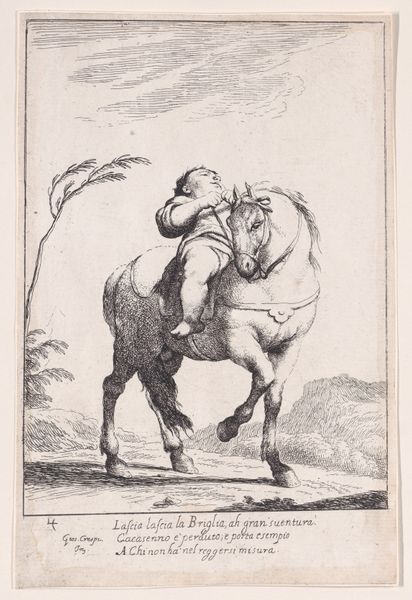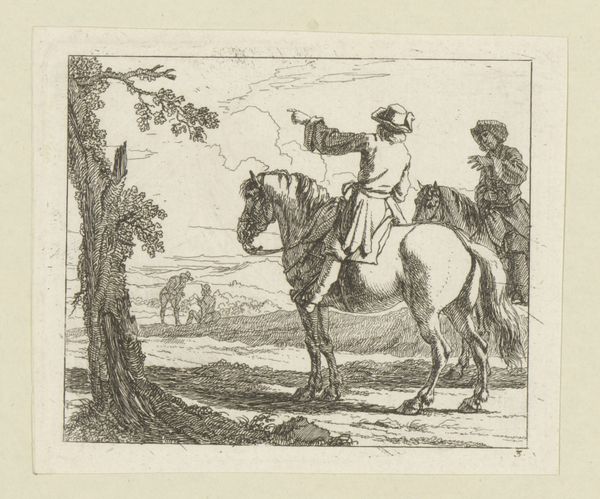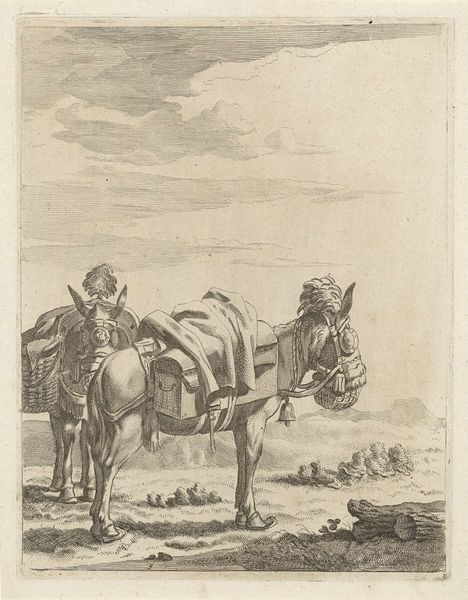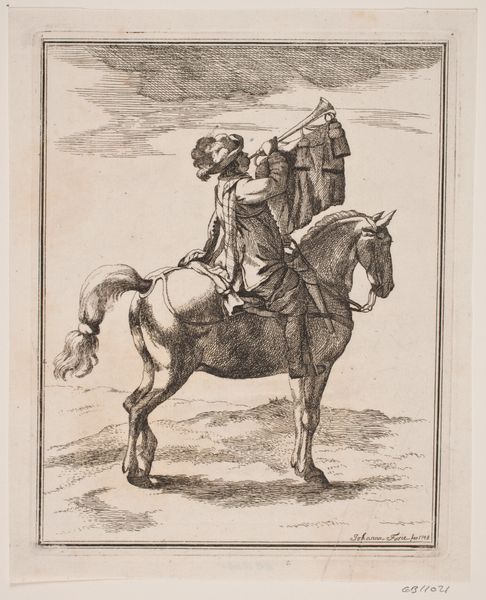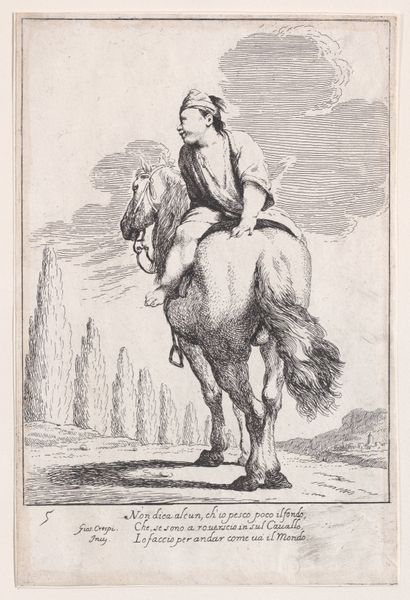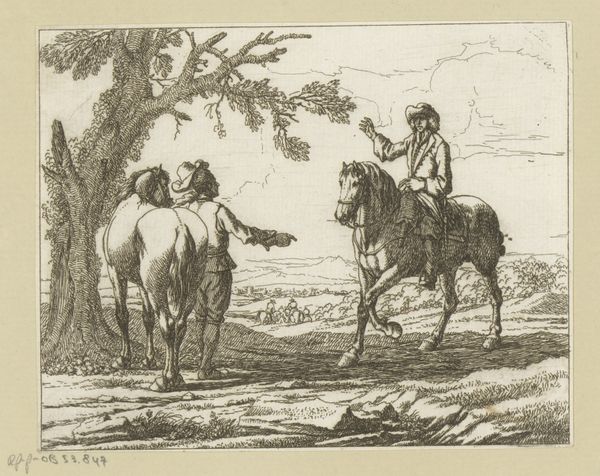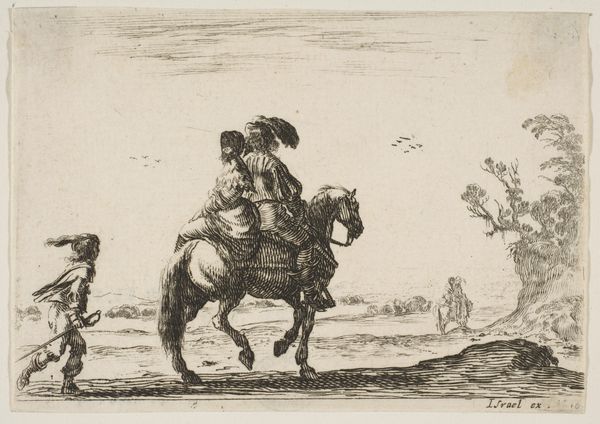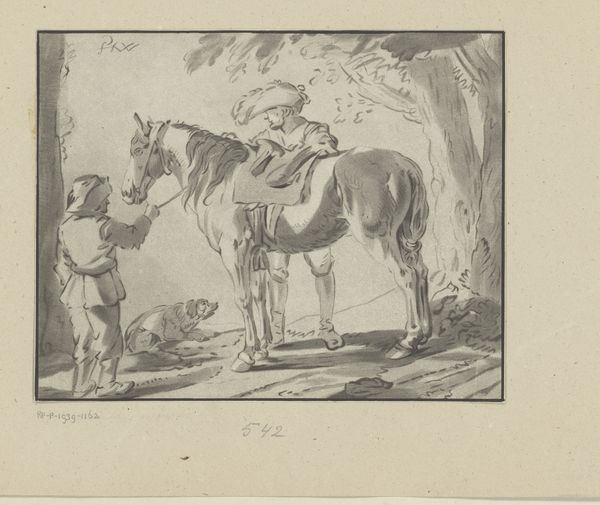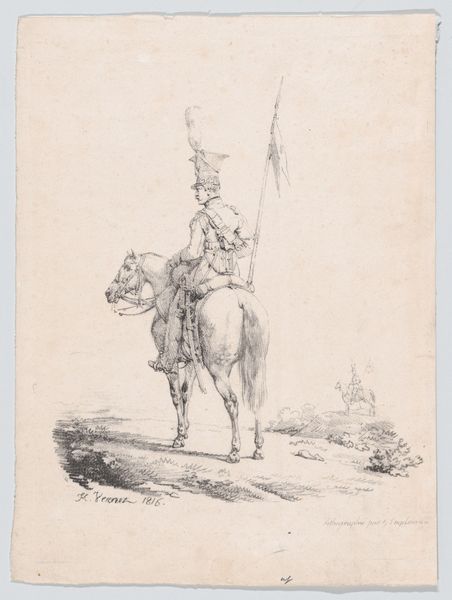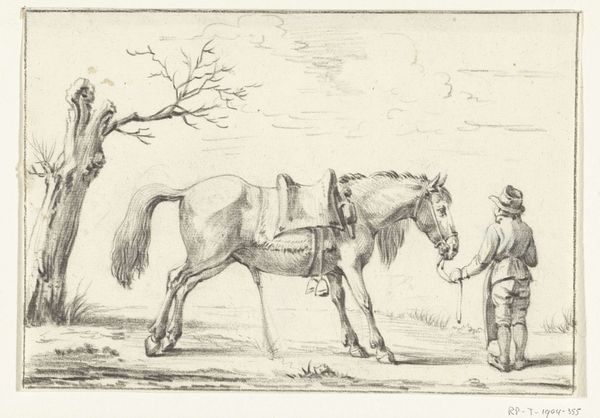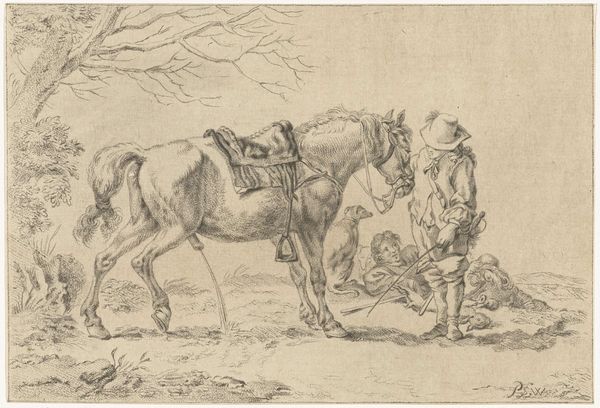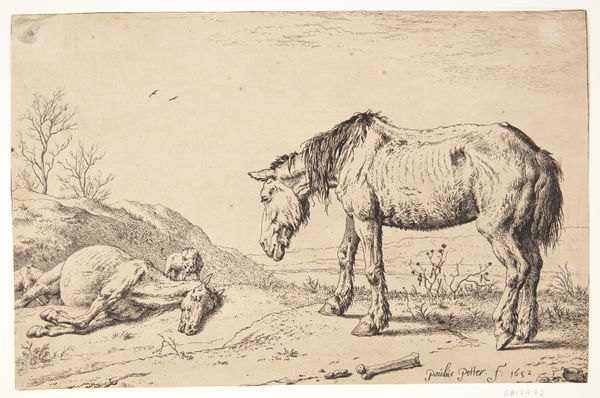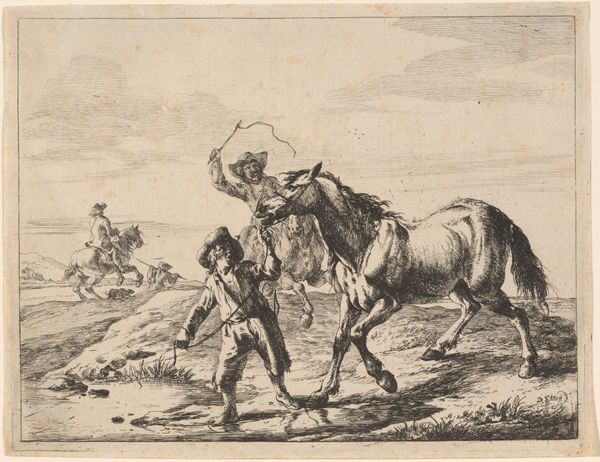
Plate 7: Bertoldino lying on a donkey, from "Bertoldo, Bertoldino, and Cacasenno" 1705 - 1715
0:00
0:00
drawing, print, etching, engraving
#
drawing
#
baroque
# print
#
etching
#
boy
#
genre-painting
#
engraving
Dimensions: Sheet (Trimmed): 9 in. × 5 13/16 in. (22.8 × 14.7 cm)
Copyright: Public Domain
Giuseppe Maria Crespi made this print, "Bertoldino lying on a donkey," sometime in the 18th century, using etching on paper. Etching is an indirect method of engraving. A metal plate, usually copper, is coated with a waxy, acid-resistant substance called ground. The artist scratches an image into the ground with a pointed tool, exposing the metal. The plate is then immersed in acid, which bites into the exposed lines. The longer the plate remains in the acid, the deeper the lines become, and the darker they will appear when printed. Crespi's etching exhibits a fine network of lines, expertly applied to create tone and texture. Look closely and you'll see how the density of the lines varies to suggest shadow and form, giving depth to the composition. Prints like this one were relatively inexpensive and widely distributed, making art accessible to a broader public and blurring the lines between high art and popular culture. Crespi’s choice of etching allowed for the efficient production of images, reflecting the growing demands of an expanding art market. By considering these material and social factors, we can better understand the role of prints in 18th-century society.
Comments
No comments
Be the first to comment and join the conversation on the ultimate creative platform.
